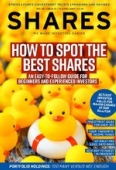Archived article
Please note that tax, investment, pension and ISA rules can change and the information and any views contained in this article may now be inaccurate.
Investment ideas for the over-70s

Choosing the right investments is important at any age. It is critical to make the right choice if you are over 70 years old as you will have a shorter investment time horizon.
If you invest in high risk assets and they perform badly, you might not have time to claw back your losses.
Why does age matter?
Your age should play a big role in deciding how much risk you want to take in your portfolio. In general, the higher your age the less risk you should take. This is because there is less time to ride out short-term market volatility.
Peter Chadborn, director at financial advice firm Plan Money, says even if someone over age 70 wants to take a moderate or high level of risk, they might not actually need to do so.
‘By that time of life, investors typically require income as opposed to growth. Or if capital growth is required, the target is usually just ahead of deposit-based returns plus inflation,’ he says.
How much of my portfolio should I have in stocks and shares?
A typical equity (another name for stocks and shares) to bond ratio for someone over age 70 would be 20:80 or 40:60.
Chadborn says a simple way of obtaining this balance is by investing in a Vanguard LifeStrategy fund. You can pick one with your desired equity and bond allocation.
Vanguard LifeStrategy 20% Equity Fund (GB00B4620290) has a 20:80 target allocation equities to bonds.
Vanguard LifeStrategy 40% Equity (GB00B41F6L43) has a 40:60 target allocation. Both funds have a low ongoing charge of 0.22%.
Ryan Hughes, head of fund selection at AJ Bell Youinvest, recommends opting for a mixture of corporate bond funds, multi-asset funds and, if your risk appetite is appropriate, diversified equity funds.
Examples of fixed interest funds include Kames Investment Grade Bond (GB00B142F707), Henderson Fixed Interest Monthly Income (GB00B7GSYN71) and iShares Core Corporate Bond UCITS ETF (SLXX).
‘These holdings would make good core positions for investors looking for corporate bond exposure and also provide the option for income should that be a requirement,’ explains Hughes.
Funds offering multi-asset exposure include JP Morgan Multi Asset Income (GB00B4N20S86) and Threadneedle Dynamic Real Return (GB00B93MKD82).
‘For equity exposure, assuming the risk profile and time horizon warrant this, I’d be looking at high quality equity income holdings such as Woodford Equity Income (GB00BLRZQ620) and Newton Global Income (GB00B8BQG486). Alongside this, exposure to core global equities through Fidelity Index World (GB00BP8RYC79) may also be appropriate,’ says Hughes.
Capital versus income
An important balance to get right is capital preservation versus income. If you have an extremely large portfolio you might be able to live off the ‘natural income’ – the amount you receive in interest and dividend payments. This would avoid your capital being eroded.
Many (if not most) people aged over 70 will need to draw some of their capital each year to provide them with sufficient income. ‘This is where it is important to have a portfolio that balances different investments that generate income, offer an element of capital protection and can appreciate in capital value,’ states Hughes.
Chadborn says he usually focuses on the total return of a fund or portfolio and structures withdrawals according to the investor’s requirements. He says this should be regularly reviewed within a cash flow planning exercise to ensure the strategy is sustainable.
‘Sufficient capital reserves should be set aside for the first few years’ income provision as a hedge against “sequence risk” and periods of time when market conditions are unfavourable and income levels may have to reduce or cease temporarily,’ adds Chadborn.
Sequence risk is a term used to describe a time when you might receive lower or negative returns early in retirement just when you start to withdraw money from your savings pot(s), weakening your investment portfolio for later life.
Being over age 70 shouldn’t necessarily preclude you from dabbling in individual shares. Experts recommend investing in shares for a minimum of five years and preferably 10 years or more.
Mike Gordon, technical director at financial advice firm Rutherford Wilkinson, says buying stocks would be ok provided you are aware of the risks and potential rewards of investing in single companies.
‘It is important to remember that companies sometimes go bust, and it is possible to lose all one’s money,’ he warns.
A CLOSER LOOK AT THREE FUNDS
FIXED INTEREST
iShares Core Corporate Bond UCITS ETF (SLXX)
This ETF tracks an index giving exposure to the 40 largest and most liquid sterling-denominated corporate bonds with investment grade rating.
Only bonds with a minimum remaining time to maturity of 1.5 years and a minimum amount outstanding of £250 million are included in the index. The ETF has a five-year annualised return of 7.6% and 0.2% ongoing charge.
MULTI-ASSET
JP Morgan Multi Asset Income (GB00B4N20S86)
This fund invests in a global portfolio of income-generating securities. It has a 40% allocation to stocks and 60% allocation
to bonds.
Stocks in the portfolio include GlaxoSmithKline (GSK) and Johnson & Johnson. It has a three-year annualised return of 4.3% and an ongoing charge of 0.83%.
EQUITY INCOME
Woodford Equity Income (GB00BLRZQ620)
This fund aims to provide a reasonable level of income with capital growth by investing primarily in UK-listed companies.
Top holdings include AstraZeneca (AZN), Imperial Brands (IMB), and Legal & General (LGEN). The fund, launched in June 2014, has returned 12.1% over the past year. Its ongoing charge is 0.75%.
Data and fund holding info: Morningstar, as of 5 April 2017
Important information:
These articles are provided by Shares magazine which is published by AJ Bell Media, a part of AJ Bell. Shares is not written by AJ Bell.
Shares is provided for your general information and use and is not a personal recommendation to invest. It is not intended to be relied upon by you in making or not making any investment decisions. The investments referred to in these articles will not be suitable for all investors. If in doubt please seek appropriate independent financial advice.
Investors acting on the information in these articles do so at their own risk and AJ Bell Media and its staff do not accept liability for losses suffered by investors as a result of their investment decisions.
Issue contents
Big News
- JD Sports is a knock-out performer
- FCA cracks down on market abuse
- Mothercare success likely to be shortlived
- Why Motif Bio’s share price could jump soon
- BHP is the latest target for activist investors
- Sepura deal under UK regulatory spotlight
- Royal Dutch Shell faces bribery allegations
- Robert Walters lifted by City jobs boost
- Still time to enjoy the rally in US stocks

 magazine
magazine








